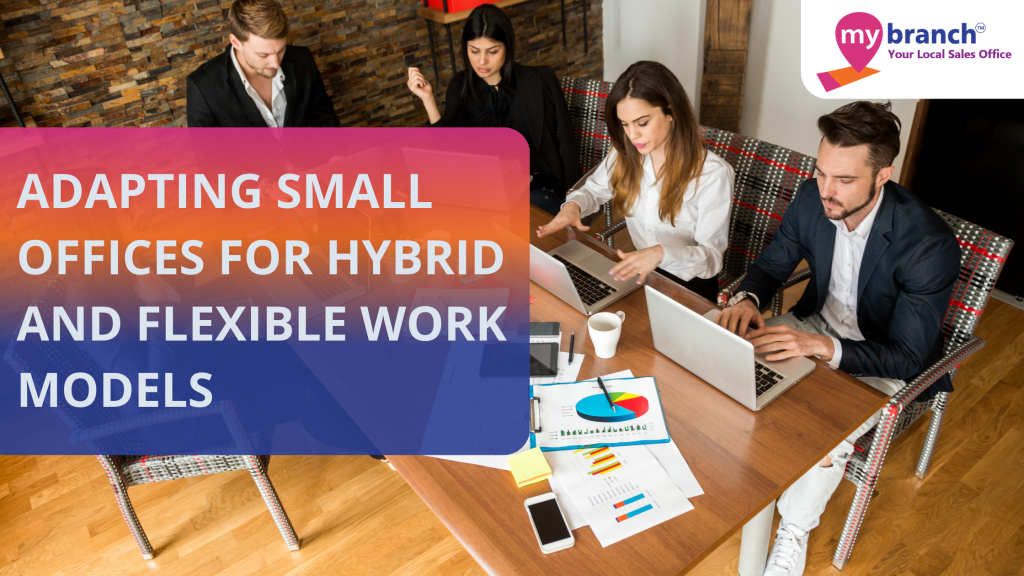
Hey there, fellow professionals! As we ride the wave of change in the working world, the way we view our office spaces is undergoing a transformation. The era of nine-to-five rigidity is giving way to flexibility and adaptability. Today, let’s dive into the realm of adapting small offices for hybrid and flexible work models. It’s not just about the workplace; it’s about creating an environment that fosters productivity, collaboration, and, above all, accommodates the evolving needs of the modern workforce.
Embracing The Hybrid Work Reality:
In the wake of recent global shifts, the hybrid work model has emerged as a game-changer. Balancing remote work and in-office collaboration, this approach demands a reevaluation of our traditional office settings. Small offices, in particular, hold a unique position in this standard shift. The goal is to make these spaces not just work-friendly but lively and flexible, mixing the online and offline seamlessly. It’s a bit like fitting a big puzzle into a small box, and that’s where the magic of change happens!
Flexibility In Design:
Now, let’s talk about how a small office space can be a superhero with their own superpower adaptability! Small spaces might seem limiting, but they are like chameleons; they can change colors to fit any situation. Imagine having workstations that are like magic tables – they can be quiet islands for focused tasks or lively hubs for team projects. Picture adjustable furniture that can change its shape based on what your team needs that day. Flexibility isn’t just about chairs on wheels; it’s about creating a space that can dance to the rhythm of your work life, adapting to whatever the day, week, or project throws your way. It’s like having an office that’s not just a place to work but a partner that understands and adjusts with you.
The Tech Upgrade:
Imagine your workplace becoming a high-tech area, making everything smoother. It’s not rocket science – investing in good stuff like top-notch video tools, cloud platforms, and super-fast Wi-Fi. These aren’t just gadgets; they’re like magic bridges connecting the real office with the virtual one. With these upgrades, your team can chat, plan, and work together as if they’re all in the same room, whether they’re at their desks or chilling on the couch at home and working. It’s like giving your small office a tech makeover, turning it into a place where the virtual and real worlds shake hands with a smile.
Creating Collaboration Corner:
Small spaces may not have big meeting rooms, but they can be the champions of creating these little teamwork spots. Imagine comfy corners with cool chairs and all the tech stuff you need. It’s like having mini headquarters for brainstorming, quick meetings, or group projects. By making these teamwork shelters, you’re not just making the most of your small space; you’re also telling your team, “Hey, let’s work together, share ideas, and make good things happen!”
Prioritizing Well-being:
Let’s shift our focus to something super important, that is the well-being in small offices! Even if your team isn’t always in the office, the place still has a big role in how everyone feels. Picture this: comfy chairs that are good for your back, sunlight streaming in from big windows, and some friendly indoor plants hanging out. It’s like creating a happy zone in your small office, making it a cozy location where everyone can recharge. With these thoughtful touches, your small space becomes more than just a workplace – it becomes a little haven where your team feels supported, refreshed, and ready to tackle whatever challenges they face. Taking care of your team’s well-being is important.
Effective Communication Strategies:
In a hybrid workspace model, communication is the glue that holds everything together. In this setup, it’s crucial to have crystal-clear communication channels and some rules to follow. Small offices have a good advantage, they can keep communication straightforward. By using tools that help manage projects, everyone, whether in the office or working from home, stays on the same page. It’s like creating a smooth highway of information, making sure every team member is in the loop and feeling connected.
Flexible Scheduling Solutions:
Flexibility isn’t just about physical spaces; it extends to scheduling as well. Embrace flexible working hours or shifts to accommodate varied work preferences. These offices can tackle the power of flexibility to create an environment that values work-life balance and individual productivity.
Encouraging Autonomy And Accountability:
Hybrid space models thrive on trust, autonomy, and accountability. Look for small office space for rent, which can leverage these principles by empowering team members to manage their time and tasks efficiently. Establish clear goals, provide the necessary resources, and encourage open communication. When employees feel trusted and responsible for their work, productivity becomes a natural outcome.
Small offices play a pivotal role in adapting to the various demands of hybrid and flexible models. By embracing flexibility in design, prioritizing technology upgrades, creating collaboration nooks, and fostering a culture of well-being and effective communication, small offices can transform into dynamic spaces that inspire productivity and innovation. Let’s view our small offices not as limitations but as opportunities for innovation. The future of work is flexible, and by adapting our spaces to this reality, we’re not just redesigning offices; we’re reshaping the way we work.
